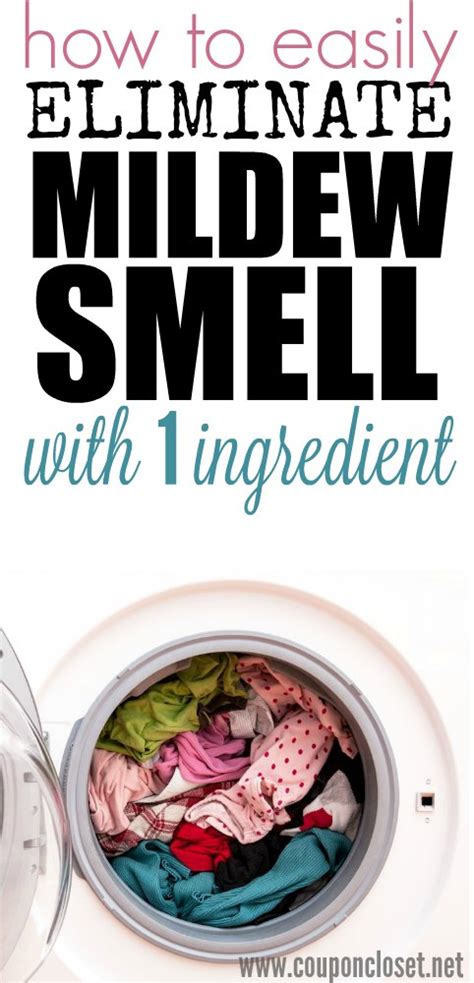How to Get Rid of That Stubborn Mildew Smell: A Complete Guide
A musty, mildew smell can be incredibly unpleasant, clinging to fabrics and surfaces and making your home feel damp and unhealthy. This isn't just an aesthetic problem; mildew can also trigger allergies and respiratory issues. Fortunately, eliminating that stubborn mildew odor is achievable with the right techniques. This guide will walk you through effective methods to banish that smell for good.
Identifying the Source of the Mildew Smell
Before you start cleaning, it's crucial to pinpoint the mildew's source. Mildew thrives in damp, dark areas, so check these common culprits:
- Bathrooms: Pay close attention to shower curtains, grout, caulking, and bath mats.
- Kitchens: Inspect dishwashers, sinks, and areas under the sink for moisture buildup.
- Laundry Room: Check washing machines, particularly the rubber seals and detergent dispensers.
- Basements and Crawl Spaces: These areas are prone to moisture and often harbor mildew.
- Closets and Storage Areas: Damp clothing or stored items can create a breeding ground for mildew.
Pro Tip: Use a blacklight to detect mildew. Mildew often fluoresces under UV light, making hidden colonies easier to spot.
Effective Methods to Eliminate Mildew Smell
Once you've identified the mildew's location, it's time to tackle the smell. Here are some highly effective methods:
1. Cleaning with Bleach Solution (For Hard Surfaces)
For hard, non-porous surfaces like tiles and countertops, a bleach solution is often the most effective.
- Mix: Combine one cup of bleach with one gallon of water. Caution: Always wear gloves and eye protection when working with bleach.
- Apply: Apply the solution to the affected area and let it sit for 10-15 minutes.
- Scrub: Scrub the surface thoroughly with a brush.
- Rinse: Rinse the area well with clean water.
- Ventilate: Ensure adequate ventilation to allow the area to dry completely.
Important Note: Bleach can damage some surfaces, so always test it in an inconspicuous area first. Avoid using bleach on fabrics or porous materials.
2. White Vinegar (A Natural and Effective Solution)
White vinegar is a natural disinfectant and deodorizer that's safe for most surfaces.
- Apply: Spray undiluted white vinegar onto the affected area.
- Let it sit: Allow it to sit for at least 30 minutes (longer for stubborn mildew).
- Scrub and Rinse: Scrub the area and rinse thoroughly with clean water.
- Air Dry: Allow the area to air dry completely.
3. Baking Soda (For Odor Absorption)
Baking soda is a fantastic odor absorber. It won't kill mildew, but it will help neutralize the smell.
- Sprinkle: Sprinkle baking soda generously on the affected area.
- Let it sit: Allow it to sit for several hours or overnight.
- Vacuum: Vacuum up the baking soda.
4. Dealing with Mildew on Fabrics
For fabrics like curtains, towels, or clothing, machine washing is usually sufficient. Add a cup of white vinegar to the wash cycle to boost the cleaning power. For heavily soiled items, consider repeating the wash cycle. Air dry the items thoroughly to prevent mildew regrowth. For delicate fabrics, consult the care label.
5. Addressing Underlying Moisture Issues
Eliminating the source of moisture is crucial to prevent mildew from returning. This might involve:
- Improving ventilation: Use exhaust fans in bathrooms and kitchens.
- Repairing leaks: Fix any leaky pipes or faucets promptly.
- Reducing humidity: Use a dehumidifier in damp areas.
Preventing Mildew in the Future
Prevention is key! By following these tips, you can significantly reduce the chances of mildew returning:
- Regular cleaning: Regularly clean areas prone to mildew.
- Good ventilation: Ensure proper ventilation in bathrooms, kitchens, and other damp areas.
- Promptly address leaks: Fix leaks as soon as they occur.
- Use dehumidifiers: Employ dehumidifiers in basements and other damp spaces.
By combining these cleaning methods with preventative measures, you can effectively eliminate that lingering mildew smell and create a fresh, healthy home environment. Remember, consistent cleaning and addressing underlying moisture issues are crucial for long-term success.
